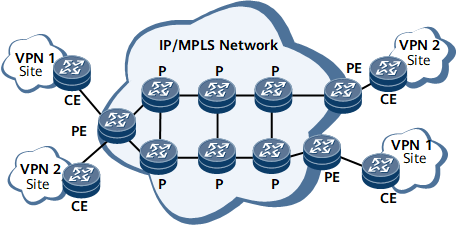Overview of MPLS LDP
Definition
The Label Distribution Protocol (LDP) is a Multiprotocol Label Switching (MPLS) control protocol, a signaling protocol of a traditional network. It classifies forwarding equivalence classes (FECs), distributes labels, and establishes and maintains label switched paths (LSPs). LDP defines messages in the label distribution process as well as procedures for processing these messages.
Purpose
On an MPLS network, LDP distributes label mappings and establishes LSPs. LDP sends multicast Hello messages to discover local peers and sets up local peer relationships. Alternatively, LDP sends unicast Hello messages to discover remote peers and sets up remote peer relationships.
Two LDP peers establish a TCP connection, negotiate LDP parameters over the TCP connection, and establish an LDP session. They exchange messages over the LDP session to set up an LSP. LDP networking is simple to construct and configure, and LDP establishes LSPs using routing information.
LDP LSPs guide IP data across a full-mesh MPLS network, over which a Border Gateway Protocol-free (BGP-free) core network can be built.
LDP works with BGP to establish end-to-end inter-autonomous system (inter-AS) or inter-carrier tunnels to transmit Layer 3 virtual private network (L3VPN) services.
LDP over traffic engineering (TE) combines LDP and TE advantages to establish end-to-end tunnels to transmit virtual private network (VPN) services.
